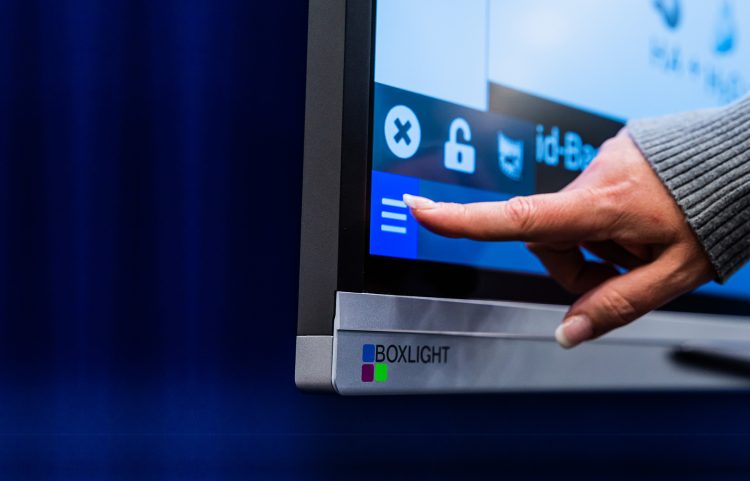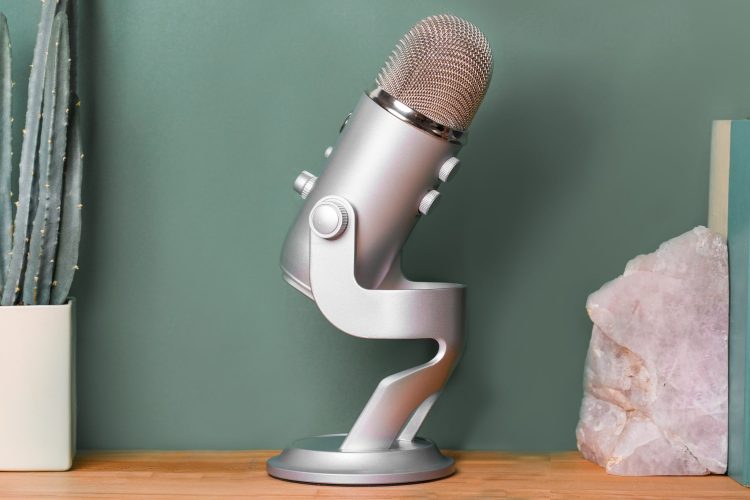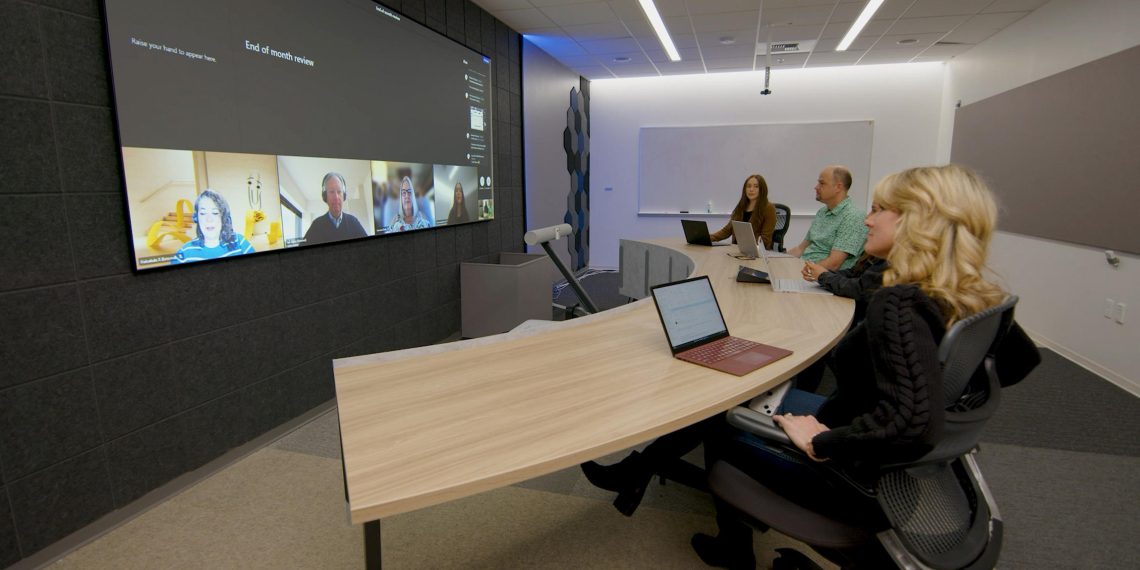Whenever it’s time to update our conference room, we should consider all the available items that can enhance the presentations and meetings kept in it. With these, it’s also possible to simplify the presentation making the entire experience much smoother. The amount of time we spend preparing and executing meetings can also be sped up while bringing over the message in a clearer way which engages the audience both in visual and audio style.
1. Displays

This is a no-brainer, but it bears mentioning. Displays are the best way to engage somebody in our presentation or whatever other theme is being discussed in the conference room. While one central display is the simplest way to go about it, it’s possible to get elaborate on the entire concept. Inserting multiple displays throughout the conference room can make it easier to follow what’s going on, even if some members of our audience aren’t placed in a favorable position.
Having multiple displays can also come in handy for showcasing different details at the same time. For example, a surface-level view and an in-depth look being compared simultaneously may give the audience a lot more insight into the subject of the conference.
You should also ensure nothing is obscuring the displays as this could hamper the overall communication between us and the audience. Additionally, our displays should be of good quality in order to maintain a discernible image that won’t strain the audience’s eyes.
2. Speakers
Another important item is speakers. The speakers can be used to amplify any audio that’s present in our conference. The bigger conference rooms especially benefit from installing multiple speakers and spreading them throughout the room as those in the back may have issues hearing all the audio parts.
The quality of the speakers shouldn’t be neglected either. Low-quality speakers are more likely to annoy than inform. Having to distinguish sounds from a device such as that can be hard or even impossible. Overall, it lowers the quality of any activity within the conference rooms.
Get high-quality speakers which can replicate the sound well and have a decent volume to them. Remember, the reason we use speakers is to be heard, so not having them fulfill that role renders them mostly useless.
3. Microphone

With the speakers set in place, we need a way to deliver the sound to them. This is usually done with a microphone. A microphone should also be of decent quality. Otherwise, we risk the sound we input being replicated in a really bad quality. The microphone should, if possible, be adjustable or even movable to accommodate any type of person who may take center point in the conference room.
To make the microphone and other parts of your conference room work together, as well as making them work between each other, we could utilize Strive AV, providers of AV systems integration solutions.
As you can imagine, the handling of all the devices and connection of them isn’t the only problem we will face when enhancing our conference room. The logistics of the whole thing will be even more of a problem.
Knowing where to position displays, speakers, and any other items is crucial. Finding ways to conduct cables or connectors through the room falls into this category as well. This issue becomes twice as potent with rooms that have odd layouts or lack room for maneuvering all the cables. Regardless of the need, audio visual integrator can come in handy.
The AV maintenance is another reason you may consider these services, seeing how the quality of your conference room may degrade over time without proper maintenance. Leaving it to professionals to deal with that is usually the best option.
4. Interactive whiteboard
Let’s return to visual components for a second. Among all the available visual components, an interactive whiteboard is one of the most useful items you can get. The ability to quickly sketch, visualize and present thoughts as the speaker goes through the subject is immensely useful.
The more complicated the topic, the more useful this whiteboard will be. Because of the extra features these come with, it’s possible to simplify the experience even further with them. For example, projecting a file onto the whiteboard allows us to give a direct explanation and guidelines for what is currently being presented.
Depending on how far our whiteboard’s interactivity goes, we could make changes to flow charts and documents as we go through them during a conference. An interactive whiteboard definitely deserves a spot in the conference room simply due to its versatility.
5. Online software for conferences

Having the ability to hold a remote conference is quite an important feature. The simple fact of any business or organization is that not everybody will be able to attend the conferences consistently. Giving them the ability to be present and contribute is quite important in this regard.
With the sheer number of options to achieve this, it’s easy to incorporate proper software and hardware for our conferences to be both online as well as in person at the same time. The software available is usually about picking whichever one you like best.
While there are certain options that may have specific benefits compared to others, the key thing you should do is keep it consistent. Everybody should download and install the same software. Being capable of launching it or interacting with the UI is also a necessity so make sure every person understands the functionality of the software once it’s introduced.
Same software should be installed within the conference room and updated consistently so you can maintain a reliable and instant connection with remote members of the conference. However, you’ll need one more detail to fully engage the remote members in the conference. This is once again where an AV integration company could come in handy, helping with the software side of things this time around.
6. Camera
While the camera is not that important for standard conferences, if you want to further the connection between the remote and present members of the conference, it’s fruitful to have visuals as well. Although displays can get connected to the laptop or computer we are using, they are usually limited to one or two being displayed at a time.
To mitigate this problem, we can use a camera that will stream the person holding the conference and all the adjacent visual aids present. This especially works for conferences where there’s a mix of physical and digital resources being presented. It’ll save everybody time and enhance the experience in general. Make sure to get a camera with a wide enough angle, so the items in the conference room are properly distinguishable.
Don’t hesitate to ask any av integrator you may have hired about the best way to position the camera. They’ll also be able to handle the installation of it in an optimal way that’ll give the camera great angle to record at.








